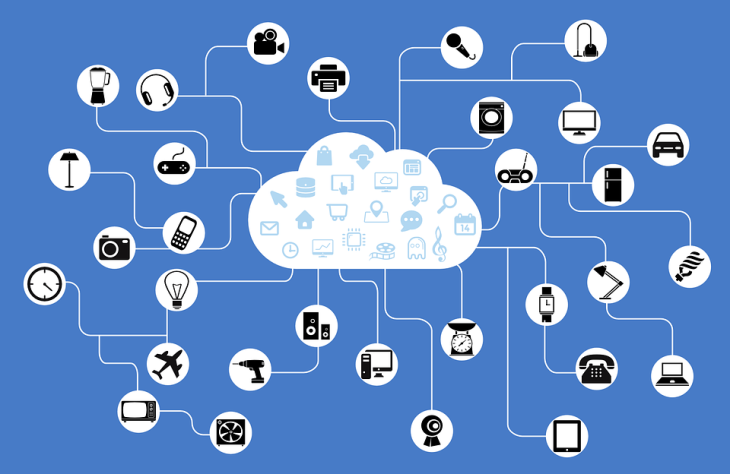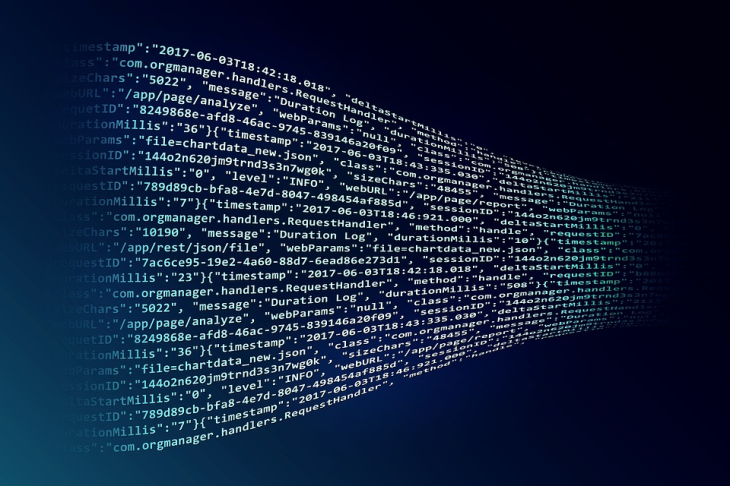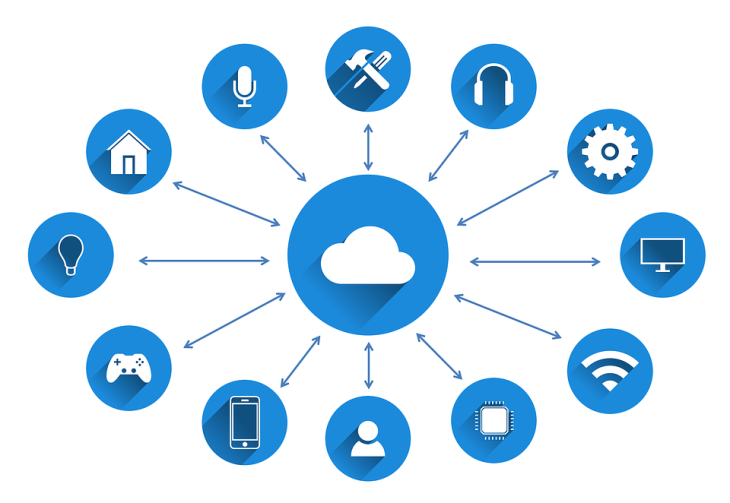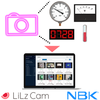Internet of Things (IoT) Software Information
Figure 1: The internet of things (IoT) refers to the growing network of physical objects embedded with sensors and connected to the internet. Source: Pixabay
The internet of things (IoT) refers to the growing network of physical objects embedded with sensors and connected to the internet, scattered throughout the world. These devices and the software that operates them allow for large amounts of data to be collected and analyzed for many different purposes. Connected devices range from ordinary household objects to complex industrial tools. The data collected and the applications where IoT devices are used vary from mundane to mission-critical.
Theory of Operation
IoT software works to connect devices that collect, exchange, and analyze data in real-time. This real-time sharing of data allows devices to automate tasks and improve decision making quickly. IoT software can be broken down into a few key functions:
Data Collection
IoT devices are embedded with sensors to collect data from their environment. Temperature, air quality, humidity, pressure, voltage, heart rate, and light are just a few possibilities of parameters IoT devices can measure. This data must be collected and stored on the device until it can be transmitted. Some devices also clean or modify the data that is collected prior to transmission, often to remove noise or to help speed up later analysis.
Data Transmission
Once data is ready for transmission, IoT devices must connect to a cloud or a central database to send the data. This is typically done via wireless protocols such as Wi-Fi, Bluetooth, or cellular networks. Some devices transmit data continuously while others only transmit data at predetermined times or after a specific event occurs.
Data Storage
With billions of devices collecting data, storing all of the collected data efficiently is incredibly important. While some data may be preprocessed by the device itself, most of the data will be stored in a cloud database for later processing. Once in the cloud, the data may be analyzed and processed to determine further actions.
Data Analysis
All of that collected data is only beneficial if it can be used to spot trends or to determine actions. IoT software applications use algorithms to analyze the data collected from IoT devices to turn that data into actions. IoT software can make decisions and perform actions in the physical environments where the devices are installed. These actions can be anything from changing motor speeds, notifying emergency services, modifying the timing for traffic lights, or adjusting temperature setpoints.
Figure 2: Some devices transmit data continuously while others only transmit data at predetermined times or after a specific event occurs. Source: Pixabay
Specifications
IoT software specifications are important because of the wide variety of devices and applications that exist for those IoT devices. Here are some common specifications that apply to IoT software:
Interoperability
Arguably the most important specification, it is important to understand how IoT software will work with the many different devices and platforms that exist in the IoT. Communication protocols and the format of data are critical to understand.
Security
IoT devices are at an increased risk of cyber-attack. IoT software should have robust security mechanisms to protect data and devices from cyber-attack. Encryption, authentication, and access control are incredibly important, especially when IoT devices are able to interact with the physical world.
Scalability
IoT devices produce a lot of data and the devices are multiplying quickly. IoT software should be able to handle a large number of devices and data streams. Due to the potential rapid deployment of devices, IoT software should be able to scale up or down as needed.
Reliability and Low Latency
Data quality is crucial to making IoT data actionable. IoT software should be reliable and available 24/7, with high uptime and minimal downtime. IoT software should be able to process data quickly and efficiently, with low latency and minimal delays.
Data Analytics
Pulling insights from the data is what drives the value creation from IoT devices. IoT software should be able to analyze data in real-time, detect patterns, and make predictions, especially with machine learning or other advanced algorithms.
Energy Efficiency
For battery-powered IoT devices, the energy efficiency of IoT software is important to understand. IoT software should be designed to minimize energy consumption to extend the battery life of the device in the field.
Types
IoT software exists to serve many different purposes depending on the application and the desired outcome. Here are some common types of IoT software:
Device Management
This software is used to manage and monitor IoT devices, including software updates, remote device control, and security management. Over the air (OTA) updates may be controlled through a device management type of IoT software.
Data Analytics
Once collected and stored, some software packages exist just to provide analytics. This software identifies patterns and trends in order to make predictions or gain insights.
Cloud Platform
This software provides a cloud-based infrastructure to store and process data from IoT devices. Cloud platforms can also provide tools for data analysis and machine learning.
Protocol Translation
Translating data from one protocol to another is important for interoperability and efficient data storage. Protocol translation software helps to make those processes more efficient.
Features
IoT software features often depend on the end-use application where the devices will be used. The two broad categories of features fall into device management and data analytics.
Device Management
Centralizing the management of IoT devices makes keeping them up and running much simpler. IoT software features like real-time reporting and cloud connectivity are important to understand. The ability to easily update devices and to scale up and down deployment of devices helps to future-proof the system.
Data Analytics
Because this is where value is extracted from the data, it is important to understand the capabilities and limitations of data analytics for IoT software. Understanding whether or not analytics are performed in real-time can be crucial for an application. Other applications like predictive maintenance may not need such a rapid response.
Edge computing allows the IoT device itself to process data and make decisions without the data going back to the cloud first. These types of devices are more robust and are able to make decisions and predict trends much faster because the computation happens physically on the IoT device instead of in the cloud.
Figure 3: Edge computing allows the IoT device itself to process data and make decisions without the data going back to the cloud first. Source: Pixabay
Applications
IoT software has numerous applications across various industries. Some common applications of IoT software include:
- Smart homes
- Smart cities
- Healthcare
- Industrial automation
- Retail
- Agriculture
Whether monitoring thermostats, lights, or city traffic patterns, IoT devices are seeing rapid adoption. Smart homes and cities are experiencing rapid deployments in IoT devices to improve everything from energy usage to human health. Factories are also able to leverage IoT devices to make their processes safer and more efficient while also predicting equipment failures before they occur.
Healthcare settings generate vast amounts of data and errors can be devastating. IoT devices help to analyze this data by tracking medications and patient vital signs to improve patient outcomes. Similarly in agriculture, IoT software can monitor soil moisture, temperature, and other factors to optimize crop yield and reduce water usage.
With the rapidly increasing number of IoT devices, the potential applications where they can be used are increasing as well. Overall, IoT software has a broad range of applications across various industries, improving efficiency, reducing costs, and providing better experiences for users.
Standards
There are several standards that apply to IoT software. These standards help to improve security and interoperability to make IoT device deployment more efficient and secure.
IoT devices use different communication protocols to exchange data including MQTT, CoAP, and HTTP. IoT devices also use different format types for the data including JSON, XML, and CSV.
IoT devices are vulnerable to cyber-attack, and therefore, IoT software must comply with security standards such as the ISO/IEC 27001 and NIST Cybersecurity Framework.
For interoperability, IoT devices come from different vendors and may use different communication protocols and data formats. Interoperability standards such as the Open Connectivity Foundation (OCF) and the Industrial Internet Consortium (IIC) provide a common framework for IoT devices to communicate with each other. Standards like Matter also promise to aid in interoperability between IoT devices
IoT devices typically use cloud computing to store and process data. Cloud computing standards such as the Open Cloud Computing Interface (OCCI) and the Cloud Data Management Interface (CDMI) ensure that data can be easily transferred between different cloud platforms.
Energy efficiency and data privacy are also areas of concern for IoT devices. IoT devices are often battery-powered, and therefore, energy efficiency standards such as the IEEE 802.11ah and the LoRaWAN are used to optimize energy consumption. Because IoT devices collect and transmit sensitive data, and therefore, data privacy standards such as the General Data Protection Regulation (GDPR) and the California Consumer Privacy Act (CCPA) ensure that user data is protected.




